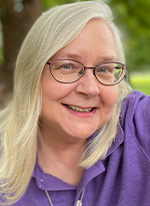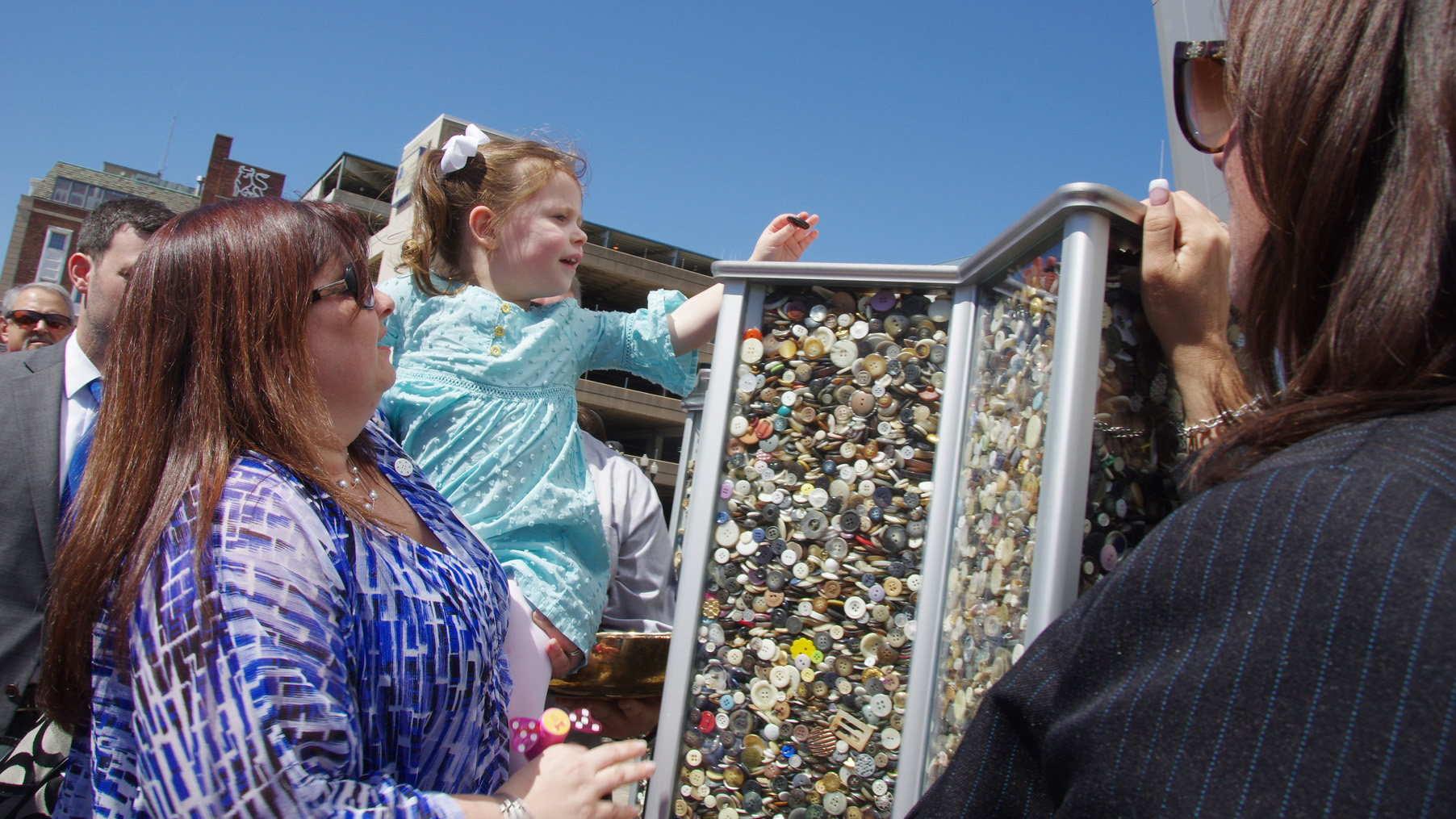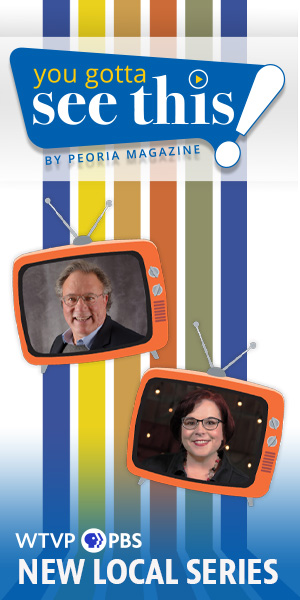Two decades later, the mission behind Peoria’s Holocaust Memorial and its 11 million buttons is as critical as ever
At a time of political and ideological chaos in the United States, the mission of the Peoria Holocaust Memorial — tolerance, communication, education — intensifies by the day.
The Memorial, located at Peoria Riverfront Museum, marks its 20th anniversary this year after its debut in 2003 at the Shoppes at Grand Prairie. Each of the 6 million buttons encased in glass stars represents a Jewish life lost to hatred during the Nazi atrocities of World War II. Another 5 million buttons in glass triangles note the Nazis’ other victims.
But the 6 million stand out in symbolizing one of the most horrific campaigns in human history to try to destroy an entire group of people, an entire religion. Ordinary men, women and children were murdered only because they were born Jewish.
And this unique memorial is in … Peoria, Illinois? Why? How?
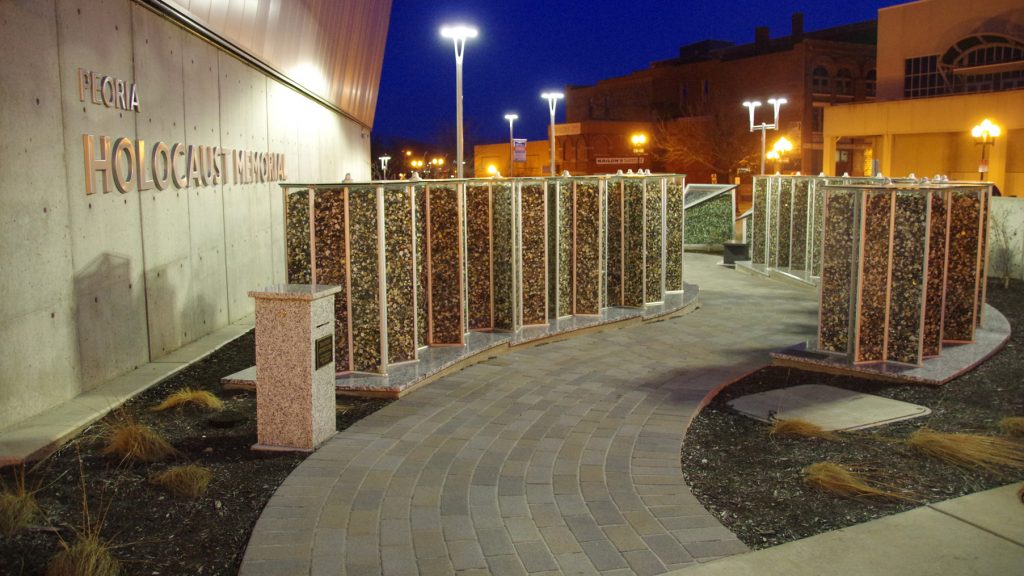

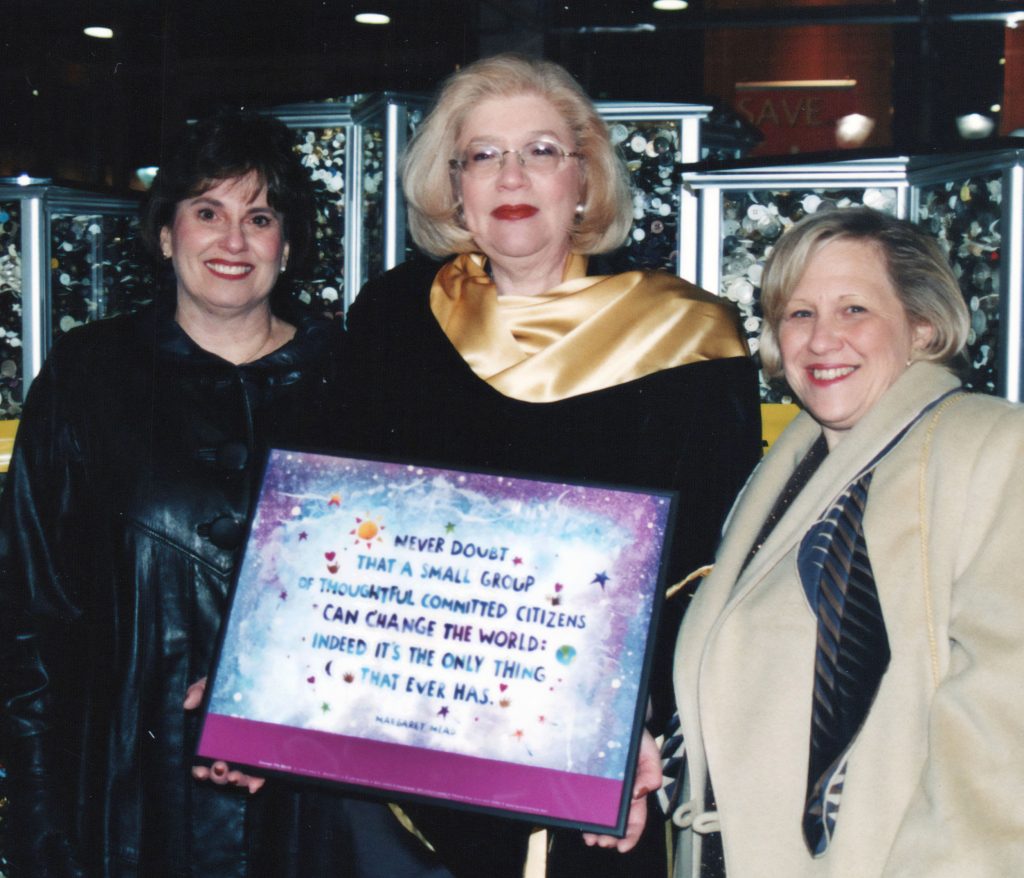
Never forget. Never again
The journey down memory lane was the work of a group of local individuals who wanted to emphasize the messages of “never again” and “never forget.”
Evelyn Vogel, a granddaughter of Holocaust victims and co-chair of the 2003 project, said when she moved to Peoria, her family donated a plaque in memory of the Holocaust, coinciding with a son’s bar mitzvah in 1990. But she and others realized that wasn’t enough to commemorate and educate others about this monstrous chapter in human history.
The stories of survivors who had settled in the area were collected. Under the auspices of the Jewish Federation of Peoria and Executive Director Susan Katz, a dedicated core of volunteers created the “Button Project,” an ambitious effort to collect at least 6 million buttons to remember and honor the 6 million victims and educate people about the horrors of the Holocaust.
Dr. Joy Miller, another co-chair of the 2003 project, said a primary mission was to teach the enormity of the Holocaust in a way that even children could grasp: One button represented one life.
In her role as a teacher, the late Charley Armstrong of Galesburg helped refine the selection of buttons: Each is unique as is a person, they hold things together as many individuals tried to hold their families together, they were what remained on the clothes left behind by victims in the camps. They represented the circle of life.
A slow start
As of July 15, 2001, just 830 buttons had been gathered. It looked daunting.
Diane Wetchler, president of the Federation at the time, wondered how they’d ever reach the goal.
“How would we ever get 11 million buttons?” she asked. “The entire community came together to build this memorial and engage and educate the Peoria area,” said Wetchler. “Even non-Jewish individuals banded together over something we were all passionate about.”
A year later, the goal was achieved with donations at 74 drop-off locations throughout central Illinois, with contributions that ultimately came from 47 states, five foreign countries and a few button companies. Hundreds of area children and adults donated untold hours to count every button by hand. Why? Because every button, as every life, was important.
Miller said the timing was a perfect storm. The early 2000s had seen a wave of anti-Semitism and vandalism at Jewish properties across the country. The Button Project mustered a unity throughout central Illinois that was inspiring, exciting and deeply emotional. Many individuals contributed buttons that had a special meaning for them, such as the memory of a lost loved one.
Miller was one of many volunteers who spent time at the memorial giving tours, answering questions or merely witnessing visitors as they grasped the unfathomable 6 million stories contained within the 18 glass stars of David, a number that is “chai” in Hebrew, meaning “life.”
A new home
The life of the Holocaust Memorial changed direction when it left the shopping center for a new home: the Peoria Riverfront Museum. Announced in 2016, a successful fundraising campaign led to the reconstruction of the memorial on the southwest corner of the museum campus in April 2017, with new technology that had not been available a decade before.
Michelle Eggert, who co-chaired the rededication effort, said the museum was a “dream location, a natural fit.” It quickly garnered community-wide support and a new wave of education about the memorial’s purpose.
“I can’t wrap my mind around how many good people there are in this world who don’t need to care, but they do,” said Eggert. The dedication was “extremely emotional,” she said, and reinvigorated the mission to teach more people, especially children, about the dangers of hatred and intolerance.
“At the Peoria Riverfront Museum, we remember,” said its executive director, John Morris. “The museum’s collaboration with the Jewish Federation of Peoria allows us to feature the extraordinary Holocaust memorial for thousands to experience in this inspired setting each year. The ‘Button Project’ that created a memorial unique in the entire world is certainly the most impactful historic sculpture of its kind.”
The memorial has been a family project since the beginning for Susan Katz and her husband Sheldon, who designed the star exhibit. While the 2003 opening was a triumph for them, the 2017 rededication had an even more emotional impact as Sheldon’s father, a Holocaust survivor, spoke at the simultaneous annual remembrance day of Yom HaShoah.
“Our granddaughter was three and a half,” Sue Katz said, “the same age as Sheldon’s aunt when she was taken away by the Nazis during the war. Luckily, our little girl lives in a place where she doesn’t face those horrific experiences. It was somber, yet a celebration of life.”
